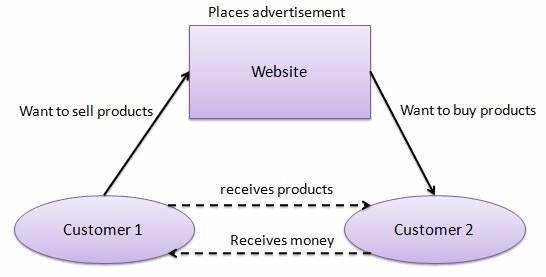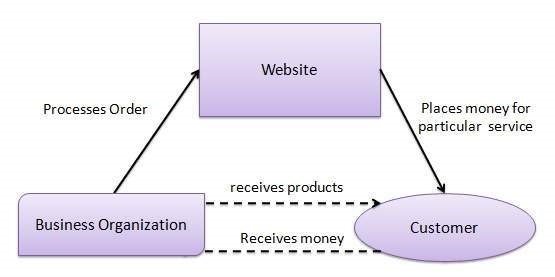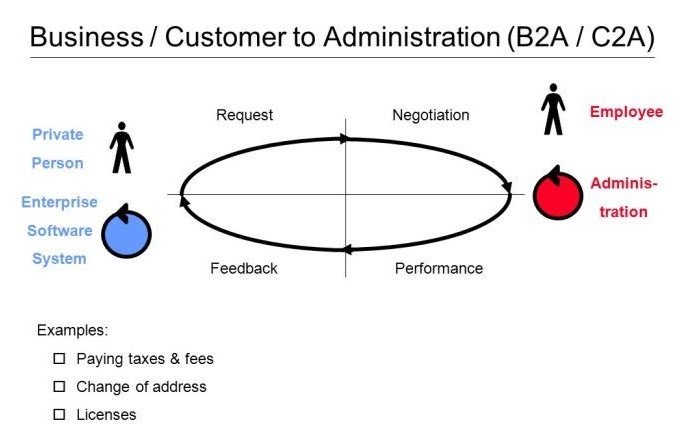Electronic commerce, or e-commerce, (e-Commerce) is a type of business model, or segment of a larger business model, that enables a firm or individual to conduct business over an electronic network, typically the internet. Electronic commerce operates in all four of the major market segments: business to business, business to consumer, consumer to consumer, and consumer to business. It can be thought of as a more advanced form of mail-order purchasing through a catalog.
Types of e-Commerce
There are 6 basic types of e-commerce
- Business-to-Business (B2B)
- Business-to-Consumer (B2C)
- Consumer-to-Consumer (C2C)
- Consumer-to-Business (C2B)
- Business-to-Administration (B2A)
- Consumer-to-Administration (C2A)
1. Business-to-Business (B2B)
Business-to-Business (B2B) e-commerce encompasses all electronic transactions of goods or services conducted between companies. Producers and traditional commerce wholesalers typically operate with this type of electronic commerce.

Figure: B2B Communication
Business-to-Consumer (B2C)
The Business-to-Consumer type of e-commerce is distinguished by the establishment of electronic business relationships between businesses and final consumers. It corresponds to the retail section of e-commerce, where traditional retail trade normally operates.
These types of relationships can be easier and more dynamic, but also more sporadic or discontinued. This type of commerce has developed greatly, due to the advent of the web, and there are already many virtual stores and malls on the Internet, which sell all kinds of consumer goods, such as computers, software, books, shoes, cars, food, financial products, digital publications, etc.

Figure: B2C Communication
Consumer-to-Consumer (C2C)
Consumer-to-Consumer (C2C) type e-commerce encompasses all electronic transactions of goods or services conducted between consumers. Generally, these transactions are conducted through a third party, which provides the online platform where the transactions are actually carried out.

Figure: C2C Communication
Consumer-to-Business (C2B)
In C2B there is a complete reversal of the traditional sense of exchanging goods. This type of e-commerce is very common in crowd sourcing based projects. A large number of individuals make their services or products available for purchase for companies seeking precisely these types of services or products.
Examples of such practices are the sites where designers present several proposals for a company logo and where only one of them is selected and effectively purchased. Another platform that is very common in this type of commerce are the markets that sell royalty-free photographs, images, media and design elements, such as iStockphoto.

Figure: C2B Communication
Business-to-Administration (B2A)
This part of e-commerce encompasses all transactions conducted online between companies and public administration. This is an area that involves a large amount and a variety of services, particularly in areas such as fiscal, social security, employment, legal documents and registers, etc. These types of services have increased considerably in recent years with investments made in e-government.

Figure: B2A/C2A Communication
Consumer-to-Administration (C2A)
The Consumer-to-Administration model encompasses all electronic transactions conducted between individuals and public administration.
Examples of applications include:
Education: disseminating information, distance learning, etc.

Social Security: through the distribution of information, making payments, etc.
Taxes: filing tax returns, payments, etc.
Health: appointments, information about illnesses, payment of health services, etc.
Both models involving Public Administration (B2A and C2A) are strongly associated to the idea of efficiency and easy usability of the services provided to citizens by the government, with the support of information and communication technologies.
One thought on “Types of e-Commerce”